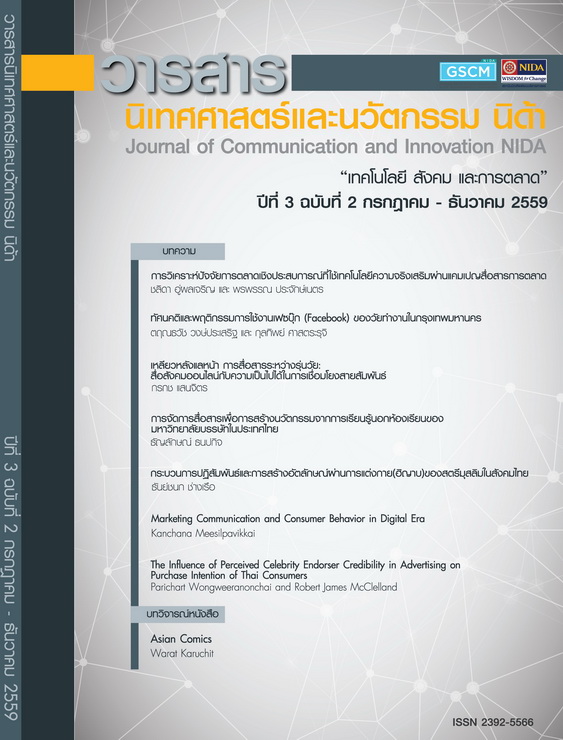กระบวนการปฏิสัมพันธ์และการสร้างอัตลักษณ์ผ่านการแต่งกาย(ฮิญาบ) ของสตรีมุสลิมในสังคมไทย
Main Article Content
Abstract
การเปลี่ยนแปลงของโลกในยุคโลกาภิวัตน์ ส่งผลให้รูปแบบเทคโนโลยีการสื่อสารรวมทั้งสภาพแวดล้อมทางสังคมเปลี่ยนแปลงไป การสร้างตัวตนและอัตลักษณ์ความเป็นมุสลิมในโลกสมัยใหม่ ทั้งในระดับปัจเจกชนและประชาคม ก่อให้เกิดการปรับตัวและเปลี่ยนแปลงของอัตลักษณ์มุสลิมในด้านต่างๆ โดยเฉพาะการแต่งกายฮิญาบของสตรีมุสลิมในปัจจุบัน มีการปรับเปลี่ยนรูปแบบให้มีความทันสมัยและสอดคล้องกับบริบทของสังคมไทยมากขึ้นแต่ยังคงไว้ซึ่งการแต่งกายที่ถูกต้องตามแนวทางศาสนา ผ่านกระบวนการปฏิสัมพันธ์กับคนในสังคมในหลายด้าน เช่น (1)ด้านปรัชญา (2)ด้านจริยธรรม (3) ด้านจิตวิทยา (4)ด้านสังคม และ(5)ด้านเศรษฐกิจ กระบวนการปฏิสัมพันธ์และการสร้างอัตลักษณ์ผ่านการแต่งกายฮิญาบของสตรีมุสลิมล้วนมีรากเหง้ามาจากศาสนาอิสลาม ดังนั้นการเข้าใจบริบทต่างๆของการแต่งกายฮิญาบของสตรีมุสลิมจึงเป็นพื้นฐานสำคัญในการสร้างความเข้าใจในเรื่องอัตลักษณ์ความเป็นมุสลิมและกระบวนการปฏิสัมพันธ์ของสตรีมุสลิมกับคนในสังคมที่สอดคล้องกับการเปลี่ยนแปลงในมิติต่างๆของสังคมสมัยใหม่
Globalization causes the change of communication technology patterns along with social circumstances. The modern creation of Muslim identity in both an individual and a communal level brings about the adaptation and the adjustment of the Muslim identity in various ways. In particular, there has been the transition in wearing Hijab of Muslim women in order to modernize and conform to the Thai context further, as long as not contradicting religious rules, through the variety of interaction processes with people in society, such as philosophical, moral, psychological, social, and economic. The interaction processes and the identity creation through wearing Hijab is fundamentally based on the Islamic foundation. Therefore, understanding diverse contexts of wearing Hijab is an important base for comprehension in terms of the Muslim identity and social interactions of Muslim women that coincide to the different dimension in modern society.
Article Details
ข้อความและความเห็นในวารสารนิเทศศาสตร์และนวัตกรรม นิด้า เป็นของผู้เขียนแต่ละท่าน มิใช่ของคณะนิเทศศาสตร์และนวัตกรรมการจัดการ สถาบันบัณฑิตพัฒนบริหารศาสตร์


